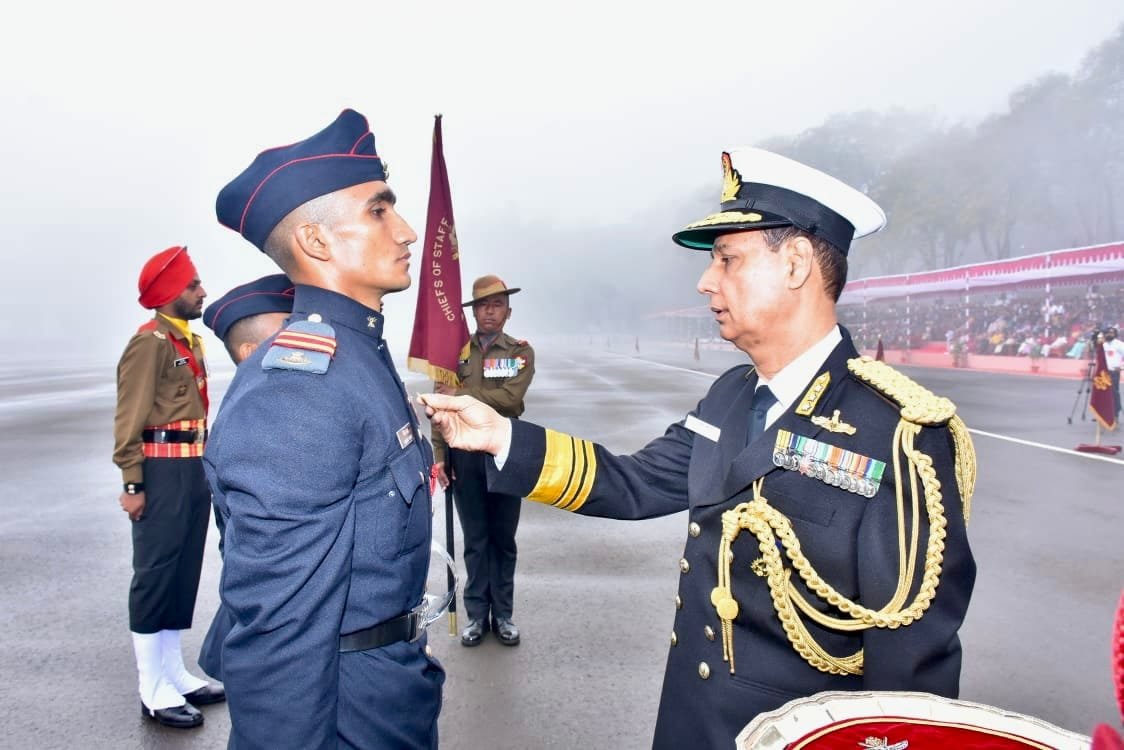TAKING US-INDIA RELATIONS TO THE NEXT LEVEL

TAKING US-INDIA RELATIONS: The relationship with India is “the most important for the United States in the 21st century,” Kurt Campbell, the Biden administration’s National Security Council coordinator for the Indo-Pacific, said last month
President Biden made similar comments earlier in 2022, and the recently published US strategic reviews also talk about the importance of India. The US National Security Strategy, for instance, states that “As India is the world’s largest democracy and a major defence partner, the United States, and India will work together, bilaterally and multilaterally, to support our shared vision for a free and open Indo-Pacific.” #TAKING US-INDIA RELATIONS TO THE NEXT LEVEL
Numerous reasons explain this enthusiasm for the US-India rapprochement. Even though differences between the two countries are many (notably at the development level), similarities also abound. Both are big countries with large and diverse populations; both are democracies; and both have vibrant civil societies and remarkably innovative communities, especially in technology.
Recently, Washington and New Delhi have capitalized on these similarities. They have strengthened their ties across the board to address regional and global problems from Covid-19 vaccines to climate change through bilateral and plurilateral mechanisms.
The primary catalyst for cooperation, however, has been their converging approach toward China, which both the United States and India have come to regard as a major competitor and, increasingly, a foe. #TAKING US-INDIA RELATIONS TO THE NEXT LEVEL
For the United States, China is “the pacing challenge” that now determines most US foreign policy decisions, even after Moscow’s invasion of Ukraine. Similarly, even as Pakistan remains India’s major concern, China has become its main rival – especially due to recurring incidents over the Line of Actual Control (LAC).
The US-India relationship has thus flourished through the prism of competition with China, although this remains largely implicit. #TAKING US-INDIA RELATIONS TO THE NEXT LEVEL
Washington and New Delhi have strengthened their political and economic relationship with Beijing in mind and boosted security cooperation, including through active participation in the Quadrilateral Security Dialogue (“Quad”) with Australia and Japan.
Washington and New Delhi have also enhanced military ties through army exercises such as the Yudh Abhyas, which recently took place in Auli, about 100 kilometers from the LAC, and naval exercises such as Malabar, now also including Australia and Japan, and the 26-country RIMPAC exercise.
That said, for the US-India relationship to reach its full potential, Washington and New Delhi must address fundamental issues and two important challenges. #TAKING US-INDIA RELATIONS TO THE NEXT LEVEL
The Obstacles Ahead
A trust deficit persists on each side about the other’s commitment to countering China. The United States is concerned by India’s longstanding policy of “strategic autonomy.” Washington fears this policy means New Delhi may not always be all-in in competition against Beijing.
India is troubled by the US interest in competing with China while leaving the door open to dialogue. New Delhi worries that Washington and Beijing will find a bilateral modus vivendi leaving India (and others) hung out to dry. #TAKING US-INDIA RELATIONS TO THE NEXT LEVEL
New Delhi’s concerns are especially strong because, at times, Washington sends mixed signals about its commitment to a flourishing relationship with India. Washington, for instance, has said little about the LAC incidents and has not yet appointed an ambassador to India.
Two challenges compound this trust deficit. First is India’s relationship with Russia, its partner since early in the Cold War. Today, their partnership lives on through defense, crude, and fertilizer trade cooperation, to the great displeasure of the United States. In 2023, for instance, India will receive the first tranche of the Russian-made S-400 missile systems, a decision Washington has criticized but tolerated, waiving sanctions mandated by the 2017 US law on Countering America’s Adversaries Through Sanctions Act. Best NDA Coaching in Lucknow
India’s refusal, despite US efforts, to join sanctions against Russia over its invasion of Ukraine further complicates the relationship, especially as Indian imports of Russian oil have since increased.
The second challenge is the US relationship with Pakistan, India’s longtime adversary. India has never been comfortable with the US-Pakistan partnership, and recently lambasted the US decision to help modernize Islamabad’s fleet of F-16 fighter jets. #TAKING US-INDIA RELATIONS TO THE NEXT LEVEL
Indian External Affairs Minister Subrahmanyam Jaishankar said the US explanation that this will help counterterrorism operations “is not fooling anybody” and suggested Pakistan will deploy the upgraded fighters against India. #TAKING US-INDIA RELATIONS TO THE NEXT LEVEL
Managing Problems
Thankfully, the United States and India are not powerless in the face of these problems.
The two countries should begin by reassuring each other that their willingness to counter China is strong and here to stay – because it is.
New Delhi should make clear that pursuing strategic autonomy does not mean equivocating about strategic competition with China but, rather, that India will compete (and thus cooperate with the United States) in a manner that maintains its independence. #TAKING US-INDIA RELATIONS TO THE NEXT LEVEL
Washington should be equally clear that openness to dialogue with China and commitment to competition are not mutually exclusive – and that US-China dialogue, should it happen, would help manage that competition as in the US-Soviet context during the Cold War and not come at the expense of India or any other US partner.
The United States and India should also accept that, for now, the Russia and Pakistan challenges strain their relationship, but they should rethink their approach to these challenges.
Washington should offer New Delhi alternatives to Russia as suppliers, especially as Indian officials look for diversification notably in defence. The good news is that US officials have said Washington and others would do just that. In the meantime, Washington should view New Delhi’s S-400 acquisition as a way of enhancing Indian defences against China. #TAKING US-INDIA RELATIONS TO THE NEXT LEVEL
New Delhi should trust that Washington cooperates with Islamabad solely to improve counterterrorism. Furthermore, the F-16 deal should illuminate that to shape US choices (and avoid having to face some it dislikes), India should develop a much tighter relationship with the United States.
- Top 30 General Knowledge Questions and Answers Expected in NDA & CDS 2025 Exams
- NDA 2026 Exam: Dates, Eligibility, Application Process & Everything You Need to Know
- After 10th, 12th, or Graduation: Which Defence Exam is Right for You?
- Dress Code and Grooming Tips for SSB Interview
- SSB OIR Test Sample Questions with Answers 2025 [PDF Included]
Seizing Opportunities
The two countries should also leverage the opportunities the new year presents.
With India now chairing the G20 and finding its place on the world stage, Washington should double down on support for New Delhi’s bids for a permanent seat at the United Nations Security Council and membership in the Nuclear Suppliers Group. #TAKING US-INDIA RELATIONS TO THE NEXT LEVEL
Together, Washington and New Delhi should also reimagine India’s place in the Indo-Pacific, away from its sole, limited role in South Asia. This can be achieved through the recently launched US Indo-Pacific Economic Framework for Prosperity and supply chain diversification projects, which have begun positioning India as an economic bulwark against China.
With the United States and India out of the Comprehensive and Progressive Agreement for Trans-Pacific Partnership and Regional Comprehensive Economic Partnership, increasing economic cooperation bilaterally and through plurilateral platforms will be critical.
Moreover, as the United States forges ahead with concepts such as friend-shoring, India’s macroeconomic strength should make it a perfect candidate for diversification. Since 2020, several trade promotion agencies have lobbied US companies to shift production out of China. While challenges remain, India and others (notably Vietnam) are good alternatives to China. India is especially attractive for its sheer market size of a billion-plus. Its population is set to overtake China’s this year, and it is young: Most Indians are under 35.
That process has already begun. For instance, in 2021 Apple shifted some of its production to India through its contract manufacturer Foxconn. Apple now manufactures iPhones and other products in Chennai and plans to move 25% of its entire production to India as part of “China Plus One,” a business strategy to avoid investing only in China. #TAKING US-INDIA RELATIONS TO THE NEXT LEVEL
Following its lead are companies like First Solar (solar PV manufacturer) and Amazon, which have increased their investments in India. #TAKING US-INDIA RELATIONS TO THE NEXT LEVEL
More generally, as the United States implements the reshoring of manufacturing across the country through legislation such as the Inflation Reduction Act and CHIPS and Science Act, Indian engineers and scientists can play an instrumental role. That should provide an impetus for Congress to rethink immigration policy, which affects large swathes of the Indian diaspora in the United States. Since 2020, for instance, Indian workers have had to wait several months for visa appointments at US consulates.
This is important: Former US Ambassador to India Richard Verma characterized the Indian diaspora as a potent force in taking the US-India relationship to the next level. Yet successive administrations have failed to capitalize on that potential, costing America talent. Fixing the immigration system should thus be a priority for the United States. #TAKING US-INDIA RELATIONS TO THE NEXT LEVEL
In 2022, the United States and India celebrated 75 years of diplomatic relations. Looking ahead, the United States and India can further strengthen their relationship, notably as competition with China is intensifying. But it will require the two countries to manage outstanding problems carefully and seize the opportunities before them. As 2023 begins, they should do so relentlessly.




